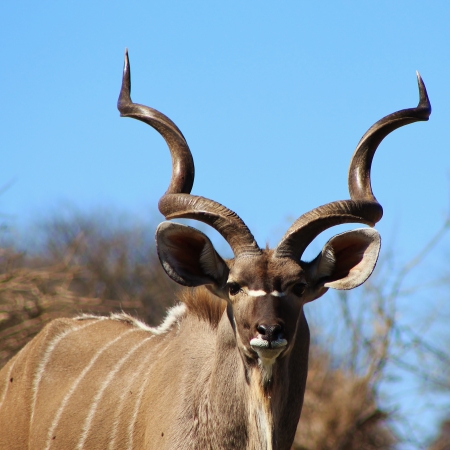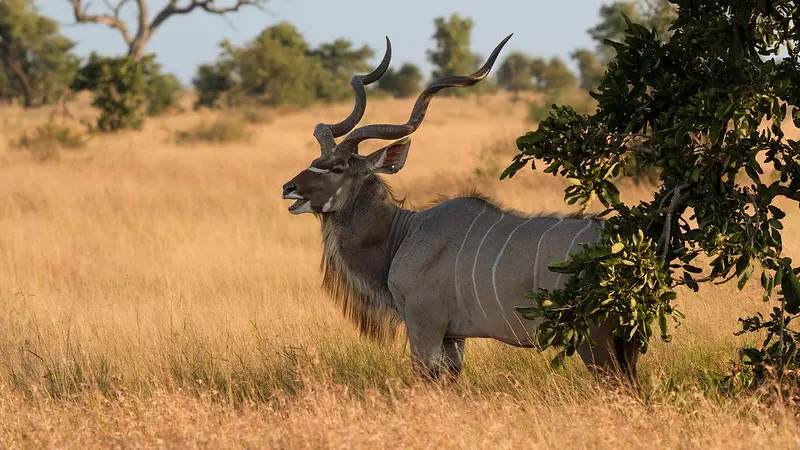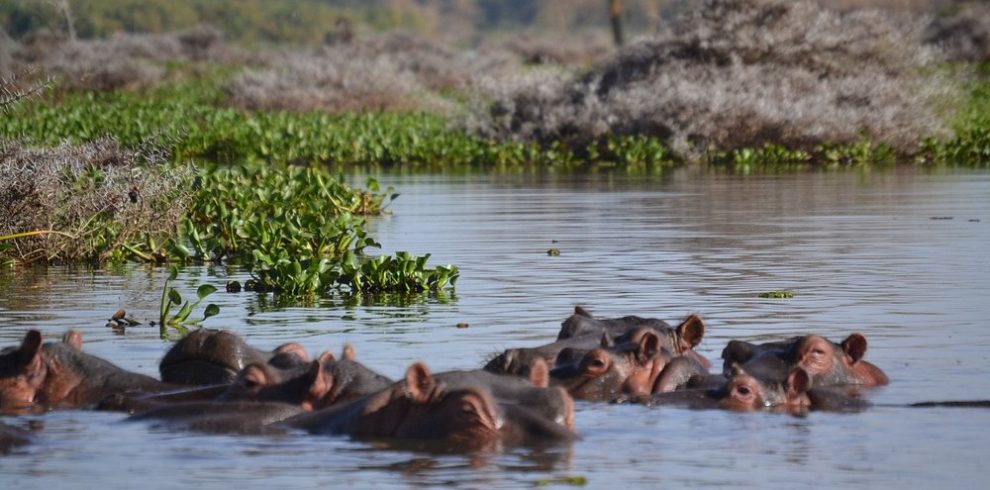
The greater kudu is one of Africa’s most iconic and striking antelope species, known for its large size, impressive spiral horns, and graceful movements. People consider it as one of the most spectacular creatures of the African wild and the beauty of this creature had captured the attention of the nature buffs and the wildlife enthusiasts of the world. While the greater kudu may be admired for its stunning appearance, there is much more to this incredible species than meets the eye.
In this article, we will delve into 5 greater kudu facts, exploring everything from their physical traits to their behavior and habitat. In our further examination of these magnificent beasts, we shall reveal the exciting details of their existence in the wilderness, their conservation status, and why they are an essential component of the African diverse ecosystem.
Whether you’re planning a safari or are simply intrigued by African wildlife, these greater kudu facts will help you appreciate these magnificent antelopes even more.
1. The Majestic Appearance: Horns and Size

One of the most striking features of the greater kudu is undoubtedly its impressive horns. Both males and females have distinct physical features that set them apart from other antelope species, but the male greater kudu’s horns are particularly remarkable. Greater kudu facts highlight that these horns are spiral-shaped and can grow up to 1.8 meters (almost 6 feet) in length. The twisters of their horns are usually turned in two or three complete turns, and thus very distinctive in their appearance to those of any other animal horns found in nature.
Body horns are not only beautiful but also functional in size and shape. These horns are applied in fights between males during mating seasons as the strongest bulls lock their horns to proclaim dominance and claim mating rights with females. This battle is an act of strength and endurance, where the bulls push, twist, and fight to conquer.
When it comes to their overall size, the greater kudu is one of the largest antelope species in Africa. Adult males can weigh 200 to 300 kilograms (440 to 660 pounds), and females are slightly smaller, weighing 120 to 210 kilograms (265 to 460 pounds). Immediately adult males may reach up to 1.5 meters (5 feet) at the shoulder, with women averaging approximately 1 meter (3.3 feet). They are well suited to their hard environments as they are large and muscular.
2. Incredible Adaptability to Diverse Habitats

One of the most impressive greater kudu facts is their ability to thrive in a wide variety of habitats across sub-Saharan Africa. The greater kudu is found in regions ranging from savannas and woodlands to forests and arid scrublands. They are highly flexible creatures who can live in a variety of ecosystems, such as semi-desert locations as well as deep forests, as long as there is sufficient cover and water.
Kudus find their habitats in the distribution of open vegetations and dense thickets because this is an environment that offers them the chance to forage their browsing food as well as gives them a refuge against predators. By securely choosing mixed habitats, they are able to utilize the various vegetation types present in these environments. The greater kudu’s diet consists mainly of leaves, fruits, and flowers, and they are known for their ability to browse on trees and shrubs, making them highly selective feeders.
Despite their adaptability, greater kudus are more likely to be found in areas with permanent water sources, as they need to drink regularly. Nonetheless, they can also live long periods without any water, with their hydration provided largely through the plants they use as food.
3. Shy and Elusive Behavior

Greater kudus are known for their elusive and cautious nature. Unlike some of Africa’s more bold and aggressive antelope species, greater kudus tend to be shy and prefer to stay out of sight. They are specifically challenging to notice in the wild because they are naturally camouflaged. Their coats are a warm reddish-brown with vertical stripes on their bodies made of white and they are perfectly camouflaged to match the forest and woodland area where they reside. This camouflage allows them to be unnoticed by predators.
Greater kudus are primarily crepuscular and nocturnal, meaning they are most active at dawn and dusk. They tend to seek seclusion in heavy vegetation or in shady shade during the heat of the day to rest and keep cool. Their acute sense of hearing and scent also sharpens them to their environment, able to sense danger and run away. They tend to freeze when feeling threatened and blend with the environment to be invisible.
While they are known for their calm demeanor, greater kudus can also display remarkable speed and agility when threatened. When frightened or chased by predators, they can run up to 70 kilometers per hour (43 miles per hour) in short bursts, jumping nimbly over obstacles on long muscular legs. One of the reasons why they manage to survive in their habitats is the ability to outsmart and outrun the predators.
4. Social Structure and Mating Behavior

When it comes to their social structure, greater kudus are generally solitary or form small groups. Adult males tend to be solitary animals, especially when they are not breeding. They are solitary or live in small groups of bachelors, which enables them not to clash with fellow males and concentrate on food seeking. Females, on the other hand, are expected to develop small herds, commonly composed of family females and their offspring. These herds are headed by a dominant female who is charged with the responsibility of leading the group and making the decisions of where to graze and rest.
One of the most intriguing greater kudu facts is their mating behavior. Males are also more vocal during the breeding season and they will challenge other males to a test of strength by using their horns. They will call out loudly to mark their territory and to lure females. The mating is mostly done during the rainy season, when there is more food and water and all the newborn calves will survive.
The greater kudu’s reproductive cycle involves a long gestation period, lasting approximately 8 months. Once born, females usually live with their calves until they reach maturity, about several months, during which they are protected and nourished by the females.
5. Conservation Status and Threats

Unfortunately, like many wildlife species in Africa, greater kudus are not immune to the threats posed by human activity. Habitat loss, poaching, and human-wildlife conflict have had an impact on greater kudu populations across the continent. Although the species is now rated as Least Concern by the International Union for Conservation of Nature (IUCN), there have been some localized population declines, especially in regions where agricultural activities and development have fragmented habitats.
Conservation efforts aimed at protecting greater kudus focus on preserving their natural habitats and ensuring that they have access to safe spaces for feeding, mating, and raising their young. In certain places, sustainable hunting programs are initiated to manage kudu populations and offer economic benefits to local residents to be involved in wildlife conservation efforts.
In addition to habitat loss, greater kudus are also vulnerable to predators such as lions, leopards, and hyenas. They are, however, hard to be caught by predatory animals due to their disguise in the thick vegetation and their nimbleness. Nonetheless, the slowness of their reproduction rates coupled with the increasing burden of human activities may challenge the sustainability of the species.
Conclusion
The greater kudu is a majestic and fascinating creature, with its graceful horns, elegant movements, and elusive nature. As we’ve explored through these greater kudu facts, it is clear that this species has many remarkable traits that make it a standout in the animal kingdom. From their impressive size and distinctive horns to their adaptability in various habitats, greater kudus are a symbol of the resilience of African wildlife.
Understanding the greater kudu’s behavior, physical characteristics, and the challenges it faces in the wild can help increase awareness and promote conservation efforts to ensure that these magnificent animals continue to thrive for generations to come. Whether you encounter them on a safari or learn about them through wildlife conservation programs, the greater kudu will continue to inspire awe and admiration for its beauty and grace.






